2016 Research Highlights
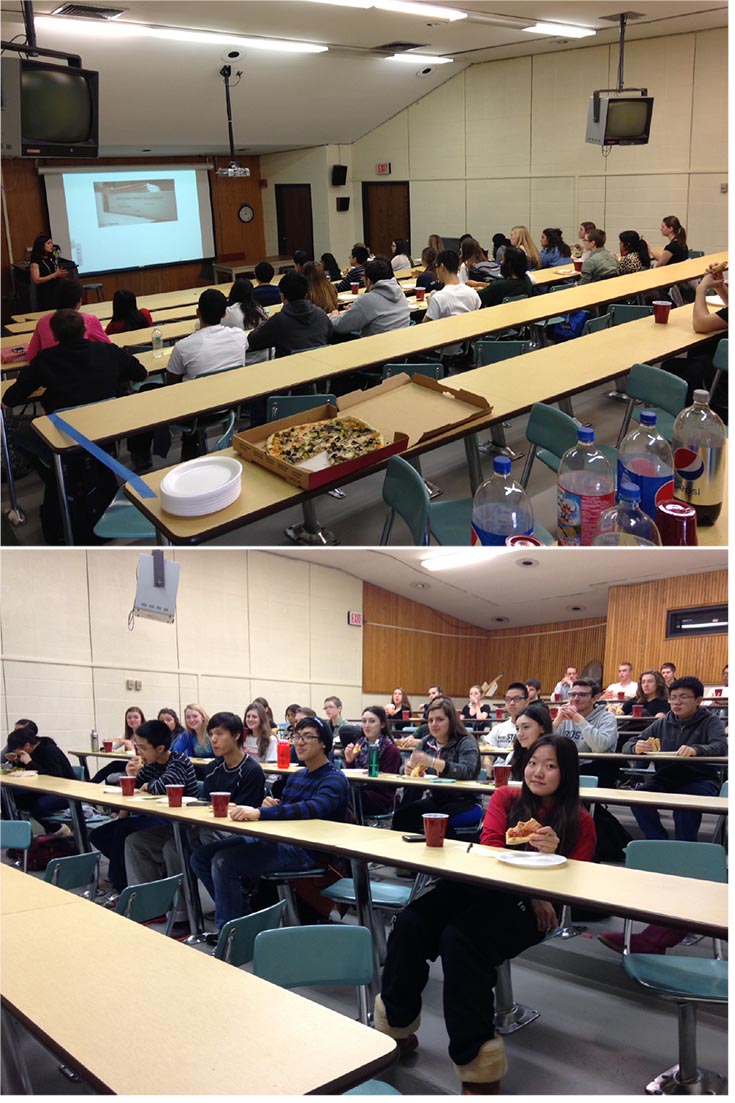
Waltham High School students
In 2015, the MRSEC developed and piloted a monthly science series that takes place during the students’ lunch periods at Waltham High School (WHS). The series is designed to inspire the next generation of material scientists. Over pizza and soda, Brandeis scientists practice science communication and share their journeys into science. WHS is 47% URM and many of the students come from economically disadvantaged backgrounds. >300 students signed-up to attend our talks and WHS enthusiastically wants to continue this series.
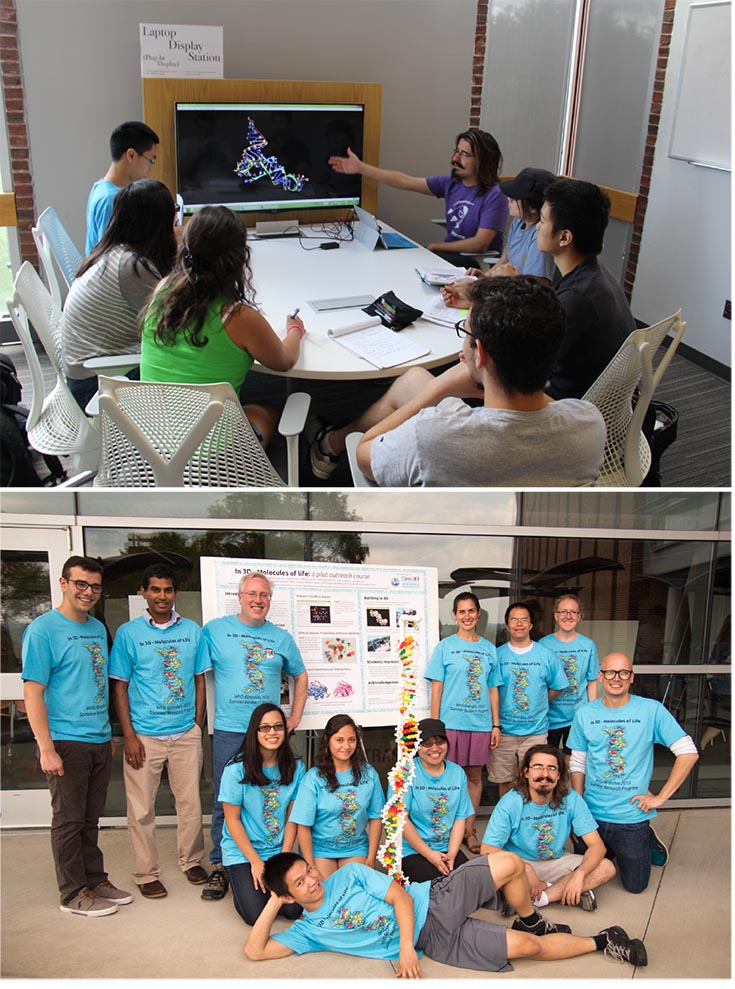
In 2015, the MRSEC led the development of an outreach course at Brandeis for Waltham High School students to strengthen our engagement with the WHS community. The course was structured to teach the students biochemistry using 3D molecular models, hands-on ac]tivities, CAD, and 3D printing. The class sessions were taught by graduate student and postdoc instructors who received extensive one-on-one curriculum-development mentoring by the Education Director and were encouraged to pursue a hands-on and participative class format.
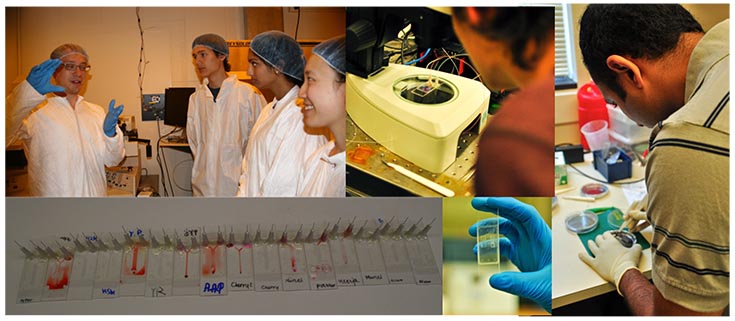
The Brandeis MRSEC offered a one-week summer course, “Introduction to Microfluidics Technology” to teach the microfabrication technologies available to build microfluidic devices. This course has been created in response to the great interest from industry, government and academia in the field of microfluidics. Students built microfluidic devices to understand the microscale phenomena and their applications.
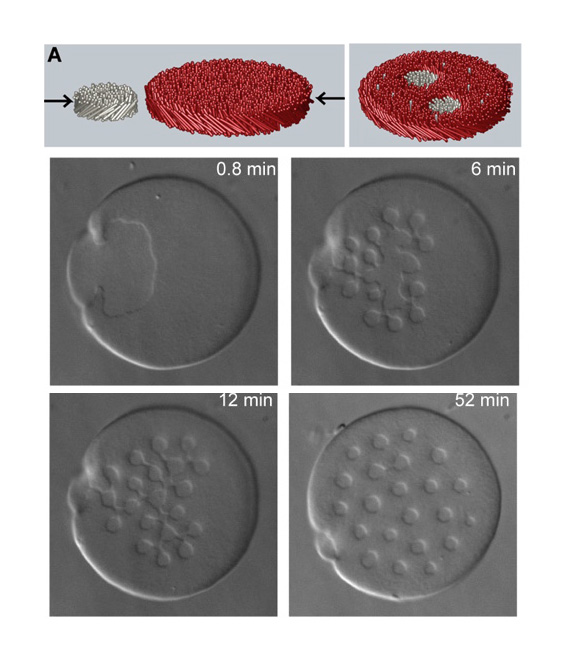
Liquid–liquid phase separation in bulk proceeds through the continuous coalescence of droplets until the system undergoes complete phase separation. But when colloids, nanoparticles or proteins are confined to interfaces, surfaces or membranes, their interactions differ fundamentally from those mediated by isotropic solvents, and this results in significantly more complex phase behavior. We have show that liquid–liquid phase separation in monolayer membranes composed of two dissimilar chiral colloidal rods gives rise to thermodynamically stable rafts that constantly exchange monomeric rods with the background reservoir to maintain a self-limited size. Our observations demonstrate a robust membrane-based pathway for the assembly of monodisperse membrane clusters that is complementary to existing methods for colloid assembly in bulk suspensions.
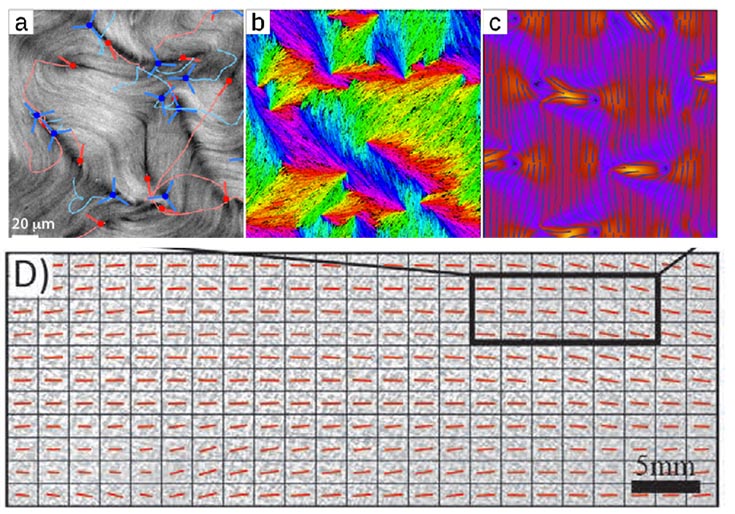
Experiments and modeling of active nematics reveal a novel defect-ordered phase, in which motile topological defects exhibit system-spanning orientational order. Such a defect-ordered phase, which has never before been observed in an active system, could enable new material properties such as macroscale flow, selfhealing or spontaneous generation of work.
(A-C) Observation of topological defects in experimental and model active nematics. (A) LC-Polscope image of an extensile microtubule system. Defects are identified by red arrows and blue crosses. (B) Snapshot from a computational model of extensile rods. Rod orientations are indicated by color. (C) Director field predicted from a continuum theory description of active nematics. (D) Macroscale motile aligned defect phase. An LC-PolScope image of a microtubule sample with dimensions 6cm x 2cm is shown. The thick red lines indicate the mean orientation of defects within each grid point (delineated by then black lines), demonstrating that defects are aligned on cm-scales.
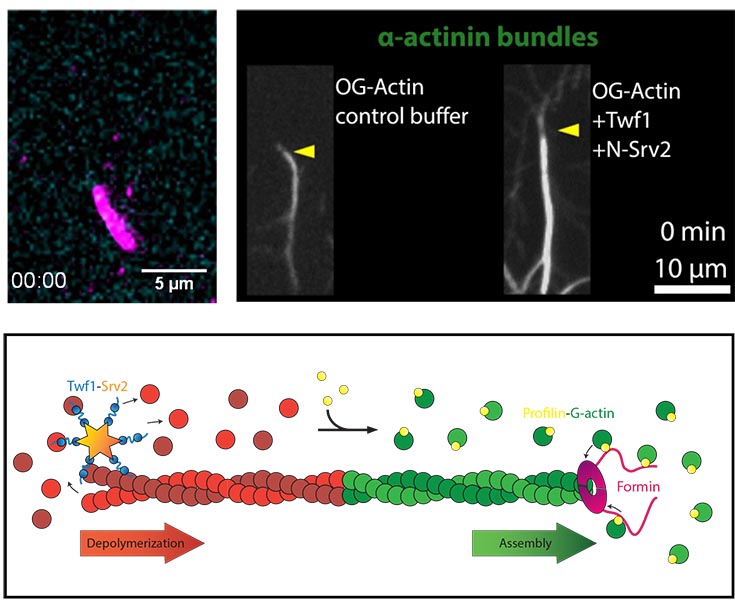
Purified actin filament polymers treadmill slowly by concentration-dependent addition of subunits at their ‘plus’ ends, and inherently slow dissociation of subunits at their ‘minus’ ends. We have defined a novel mechanism in which two proteins (Twf1 and Srv2/CAP) interact to accelerate depolymerization of filaments at minus ends by 20-fold. This has allowed us to reconstitute and directly visualize (using TIRF microscopy) actin filaments undergoing tunable, accelerated treadmilling, with formins and profilin catalyzing polymerization at plus ends and Twf1-Srv2 catalyzing depolymerization at minus ends. Filaments are first polymerized using actin monomers (purple), and then actin monomers of another color (teal) are introduced along with Twf1-Srv2. This mechanism also catalyzes actin filament bundle depolymerization.
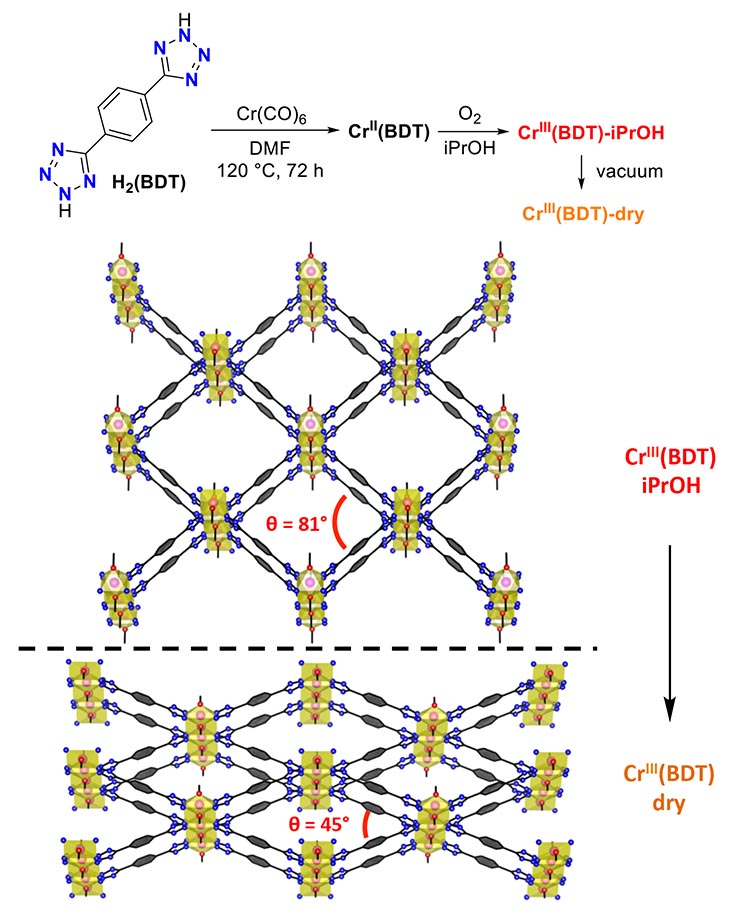
Porous materials that undergo structural changes in response to external stimuli hold potential in molecular sensing and gas storage or separation applications. We have developed a new synthetic route for the assembly of a flexible metal-organic framework (MOF) constructed from reduced Cr(II) metal ions. The Cr(II) ions in this material are oxidized to Cr(III) upon exposure to O2. Upon drying, the crystalline structure undergoes an accordion-like distortion and closing of the guest-accessible channels.

